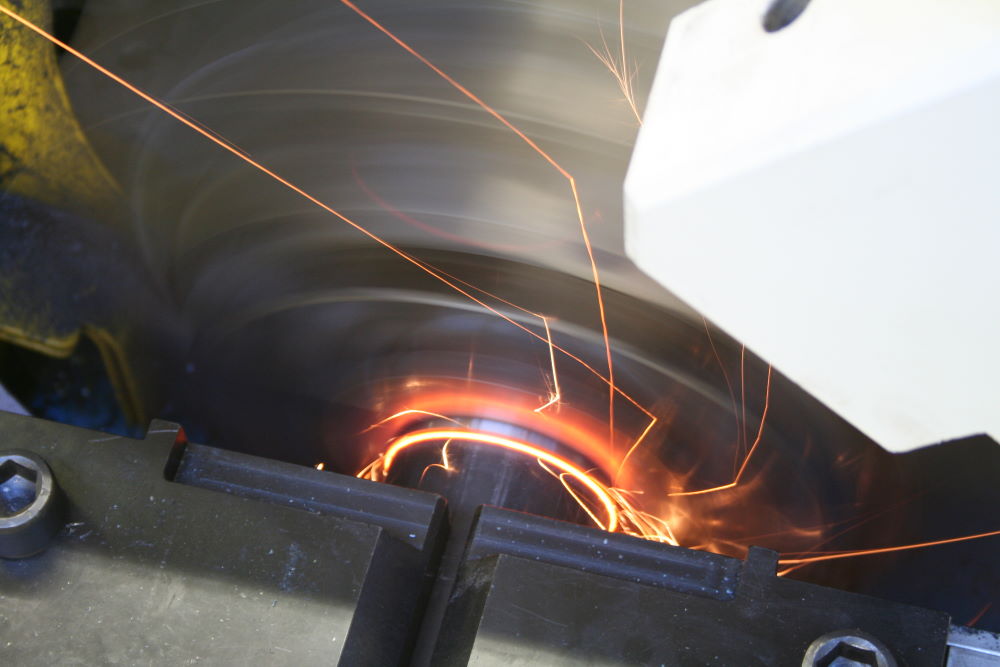Frictionwelding
Frictionwelding is the best way to weld several kinds of material together. We have more than 10 years of experience in frictionwelding.
Why frictionwelding?
Benefits compared to conventional welding
This process is fast, efficient and therefore cost-effective. Very little pre-engineering is required, the heat affected zone is limited and no welding wire, gas mixture or extraction is necessary. However, the most significant benefit of friction welding is the perfect join that’s achieved. This is fully penetrative weld (surface weld as opposed to contour weld) because the components are welded and forged into one piece. Friction welding is a sustainable method and the burden placed on the environment during the production process is significantly lower than that of traditional welding techniques. In a friction weld, the joint is stronger than the parent material.
The flash that develops after the forging process is immediately removed by the same machine.
Welds such as these are used in the nuclear-, maritime-, offshore-, onshore and aerospace industry, but can be applied within all sectors, such as machinery- and cylinder production.

How
Professional frictionwelding
We only use hydraulic cylinders as an example. There are many more applications.
We can also arrange the related machining of piston rods or cylinder tubes prior to, or after, welding. Or you can simply supply the machined materials and we’ll handle the friction welding process for you.
Thanks to our fully-mechanised working method, our processes are semi-automated or fully-automated (two manoeuvring robots and one welding robot). Our Friction Welding machine and lathes are automatically fed. This enables us to work quickly, efficiently and to save costs. Our JIT customer strategy is of key importance here.
A Friction Weld (Frictielas, Wrijvingslas, Reibschweiß) involves the forging together of two components. This can involve a Ferrous material to a non-Ferrous material, a Ferrous material to a Ferrous material, or other combinations. Friction is created by spinning two components against one another while applying high pressure (Max. 600 KN). The resulting heat makes both components glow red-hot, thereby plasticising the material and forging them together.
